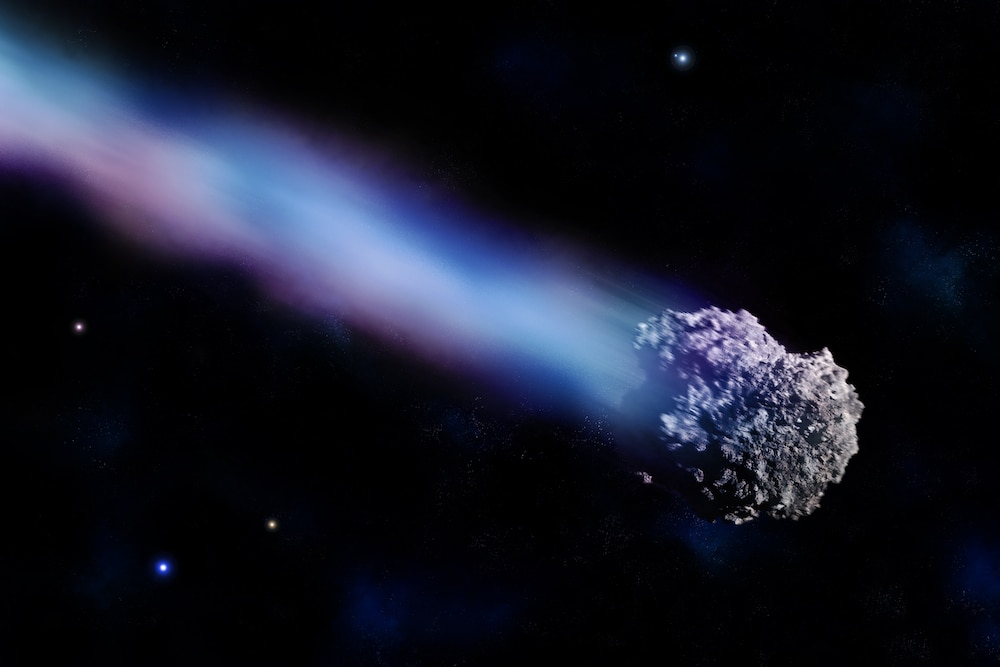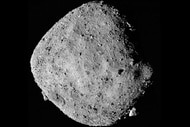Create a free profile to get unlimited access to exclusive videos, sweepstakes, and more!
Interstellar meteors may have been fired from supernovae like iron-rich bullets
Take cover!

In the 1953 science fiction film It Came From Outer Space, protagonists John Putnam and Ellen Fields witness a meteor impact near their home town. At least, they think it’s a meteor impact. When they arrive at the crash site, they discover that it wasn’t a meteor at all, but a downed alien spacecraft. What follows is a series of cosmic misunderstandings resulting in the departure of the aliens and humanity’s resumed isolation from the larger galactic community.
If interstellar aliens have ever visited our planet for real, they’re doing a good job of hiding it. We have, however, been visited by objects from beyond our solar system and we’re only recently figuring out how to identify them.
In 2017, the world’s collective imagination was captured by the arrival and quick departure of ‘Oumuamua, the first ever documented interstellar object to flyby our planet. It is believed to have been a pancake-shaped asteroid roughly 115 meters in length. Two years later in August of 2019, an amateur astronomer detected the second confirmed interstellar visitor when he spied 2/I Borisov in the night sky. Now, astronomers have detected two additional interstellar objects — one of them is confirmed while the other remains a candidate — only these far-flung friends didn’t wave at the Earth as they flew past. They made contact.
In 2014, IM1 was detected by the U.S. Department of Defense as it burned up in the atmosphere. Five years later it was pegged as a candidate for interstellar origin. That origin was confirmed in 2022. The object had a mass of about 460 kilograms, a diameter of about half a meter, and was traveling at roughly 60 kilometers per second before it impacted. Actually, IM1’s visit predates ‘Oumuamua by almost four years, but we didn’t know it was interstellar until later, so ‘Oumuamua gets the trophy.
By measuring the light peak as IM2 disintegrated, scientists were able to estimate its material strength, get an idea of what it was made of, and compare that to other known cosmic objects. They found that it was approximately 20 times stronger than typical stony meteorites and roughly twice as strong as your average iron meteorite.
Researchers then turned to the fireball catalogue maintained by the Center for Near Earth Object Studies in hopes of finding similar objects. There, they found another candidate named IM2. It was detected in 2017 and is believed to have been roughly a meter in length, approximately 10 times as massive as IM1, and traveling at about 40 kilometers per second.
It’s not yet certain if IM2 is also interstellar in origin, but its characteristics suggest that it is. Both IM1 and IM2 are among the strongest fireballs CNEOS has detected. They rank in first and third place out of 273 objects, in terms of material strength according to the paper’s authors. They’ve rich in iron to an extent we don’t typically see in our own solar system. That they are so different from locally grown space rocks supports the idea that they came from somewhere else. They just didn’t behave like they came from our neighborhood.
Moreover, the researchers indicated that if we assume these objects are representative of the background population of space rocks, then their combined detection suggests that roughly 40% of all refractory elements — read: metals with a high melting point — are trapped in rocks about a meter in size. If that’s the case, the pure abundance of them is too much to have come from a planetary system. They must have formed in some other way.
One potential explanation is that they were formed inside a supernova and ejected as “iron-rich bullets” all across space. Supposing the interstellar origin of IM2 is confirmed, and the rest of the hypothesis holds up, that means we’re living in a universe filled with stray supernova buckshot. Every once in a while, one of those wild shots finds its way across the cosmos, into our solar system, and brightly burning as it breaks up in the atmosphere. It's enough to make you grateful for our planet’s atmospheric body armor, otherwise we might be little more than a planetary pincushion pockmarked with interstellar wounds.













